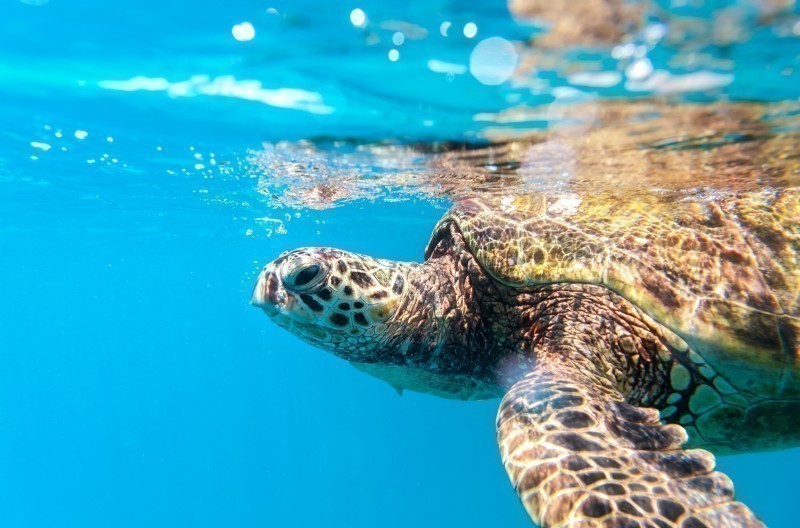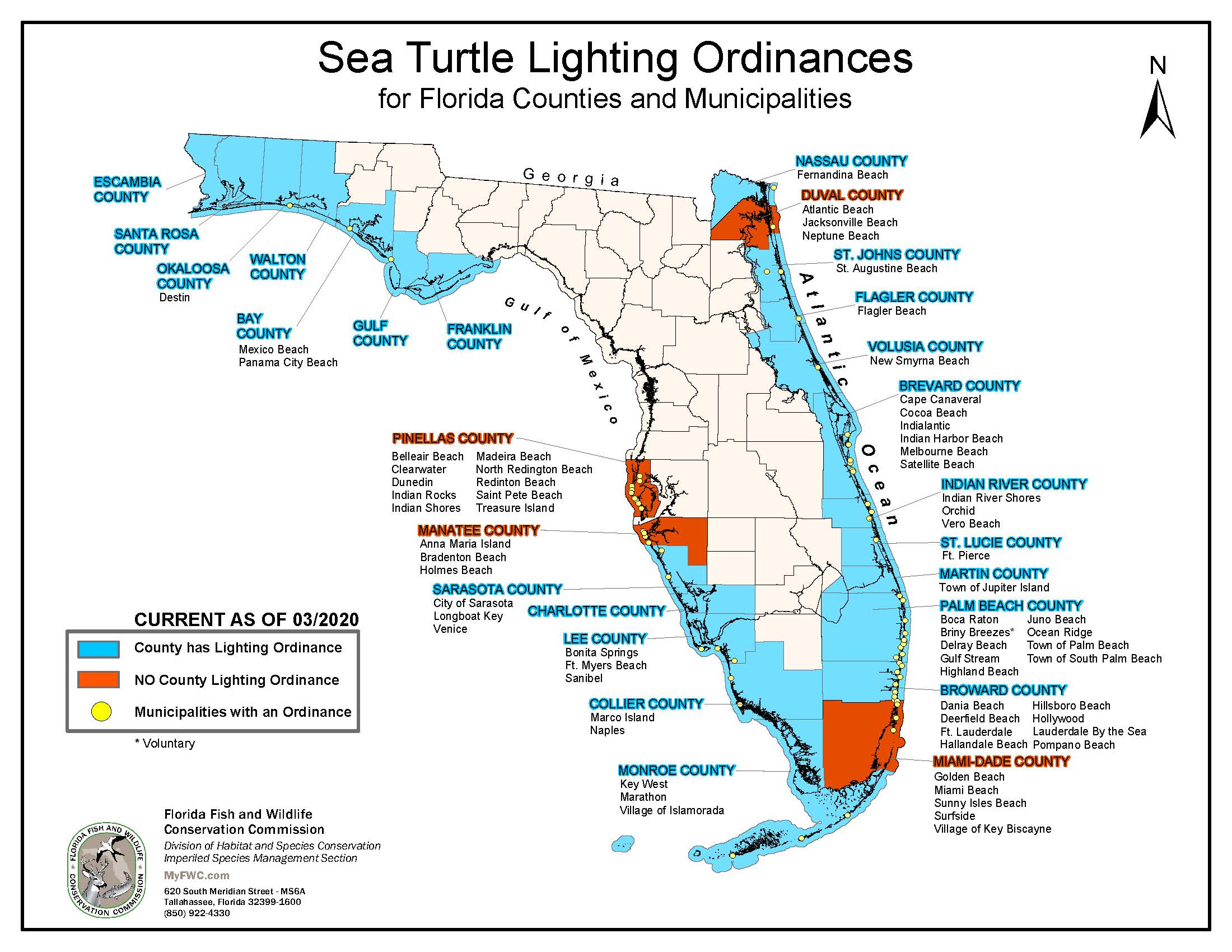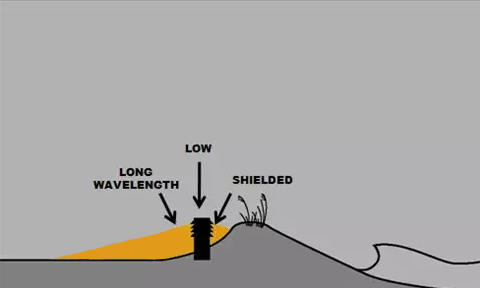
Save the Turtles with Turtle-Friendly Lighting
Satellite imagery reveals seemingly beautiful spiderwebs of light emanating from bright points, bringing our cities to life at night. Light allows us to continue living our lives safely, comfortably, and uninterrupted after sundown. However, research has uncovered that some nighttime illumination can cause disruption for the wildlife with which we share our world.

The Impact of Artificial Light on Sea Turtles
Sea turtle populations have experienced declines worldwide, and their recovery largely depends on managing the effects of growing human populations. One of these effects is light pollution - the presence of detrimental artificial light in the environment. According to the Florida Fish and Wildlife Conservation Commission (FWC), disorientation from artificial lighting causes thousands of hatchling deaths in Florida each year and is a significant marine turtle conservation problem. Light pollution on nesting beaches is destructive to sea turtles because it alters critical nocturnal behaviors such as their choice of nesting sites, their return path to the sea after nesting, and how hatchlings find the sea.
Fortunately, light pollution is among the most manageable ecological disturbances caused by humans. This growing understanding has sparked new technology, a series of guidelines, and recommendations resulting in greater awareness of what to consider when lighting our communities.
LEDs are widely considered one of the best available technologies that work well for humans and various groups of wildlife since they are highly directional and can be manufactured to produce long-wavelength light. Research has shown that sea turtles are less impacted by lighting within specific wavelengths and that is why amber colored LEDs can be less disruptive than white light.
The state of Florida implemented Section 161.163, Florida Statutes, which requires the Florida Department of Environmental Protection to designate coastal areas utilized, or likely utilized, by sea turtles for nesting and to establish guidelines for local government regulations that control beachfront lighting to protect hatching sea turtles. Visit FWC to learn more about sea turtle protection ordinances.

Furthermore, FWC recommends beachfront property owners follow the three golden rules:
Keep it LOW
- Fixtures must be mounted as low as possible and still be appropriate for the needed purpose.
- The bulb must produce the lowest wattage/lumens necessary for the needed purpose.
Keep it LONG
- Lamp/Bulb must produce only long wavelength light (560 nm or greater, which is amber, orange, or red)
Keep it SHIELDED
- The fixture must be completely downward-directed.
- The fixture must be able to shield the bulb, lamp, or glowing lens from the beach.

Let’s Save the Turtles
One of the common challenges for grassroots environmental causes around the globe is raising awareness about their issue(s). QTL believes that the most direct path to real change is through building grassroots momentum and making a commitment to long-term change. That’s why we partnered with the Sea Turtle Conservancy (STC), the world’s leading sea turtle research and conservation group. Founded in 1959, its mission is to ensure the survival of sea turtles through research, education, training advocacy, and protection of the natural habitats upon which they depend.
To support STC’s mission, we’re donating FWC-approved products to retrofit problematic beachfront properties throughout Florida’s coastline, along with 1% of all FWC-approved product sales.
Whether you’re designing a new outdoor space or replacing problematic lighting, you can help minimize the ecological impact lighting has on sea turtles with the appropriate products. Join us in being part of creating a more cooperative environment for all living beings.

0 Comments: